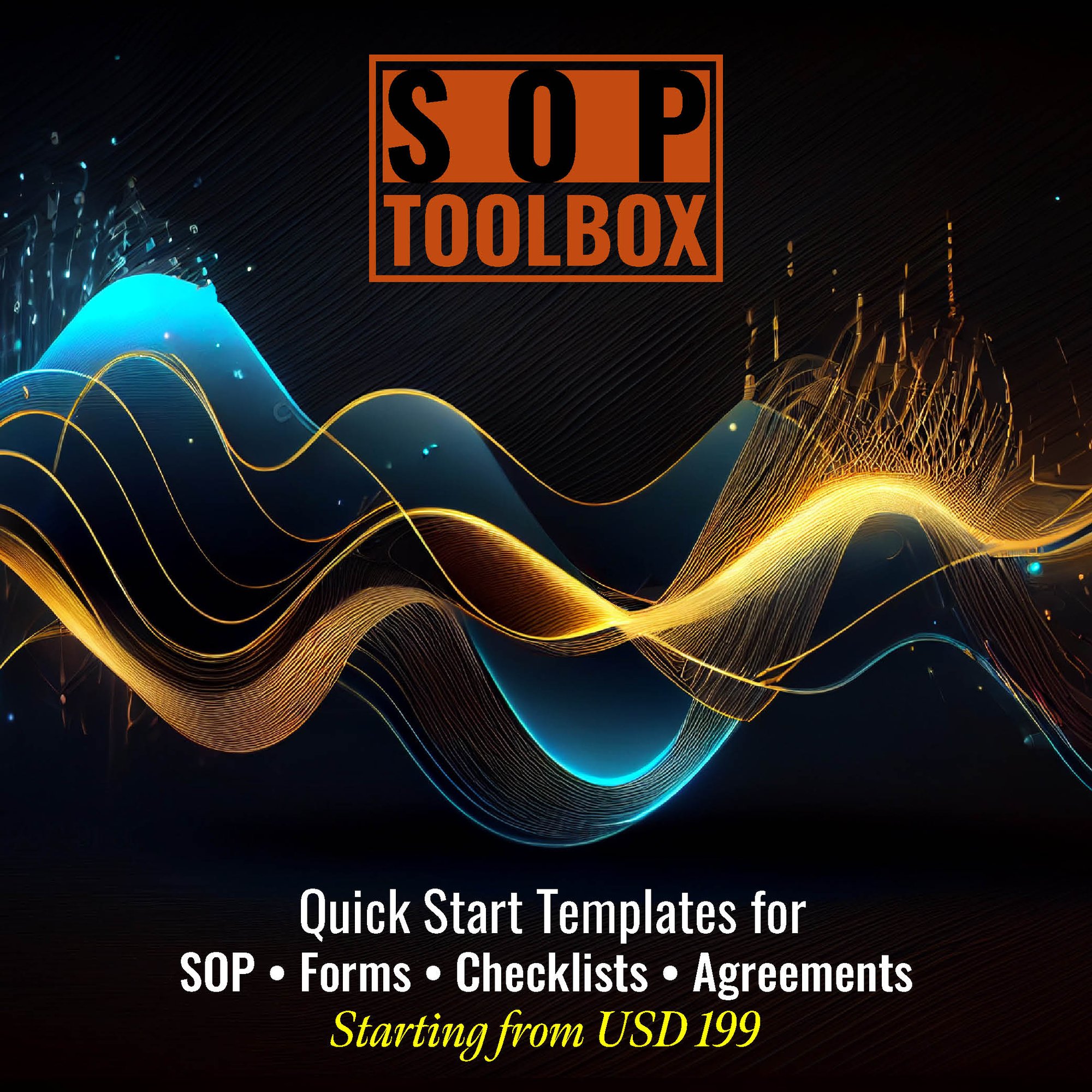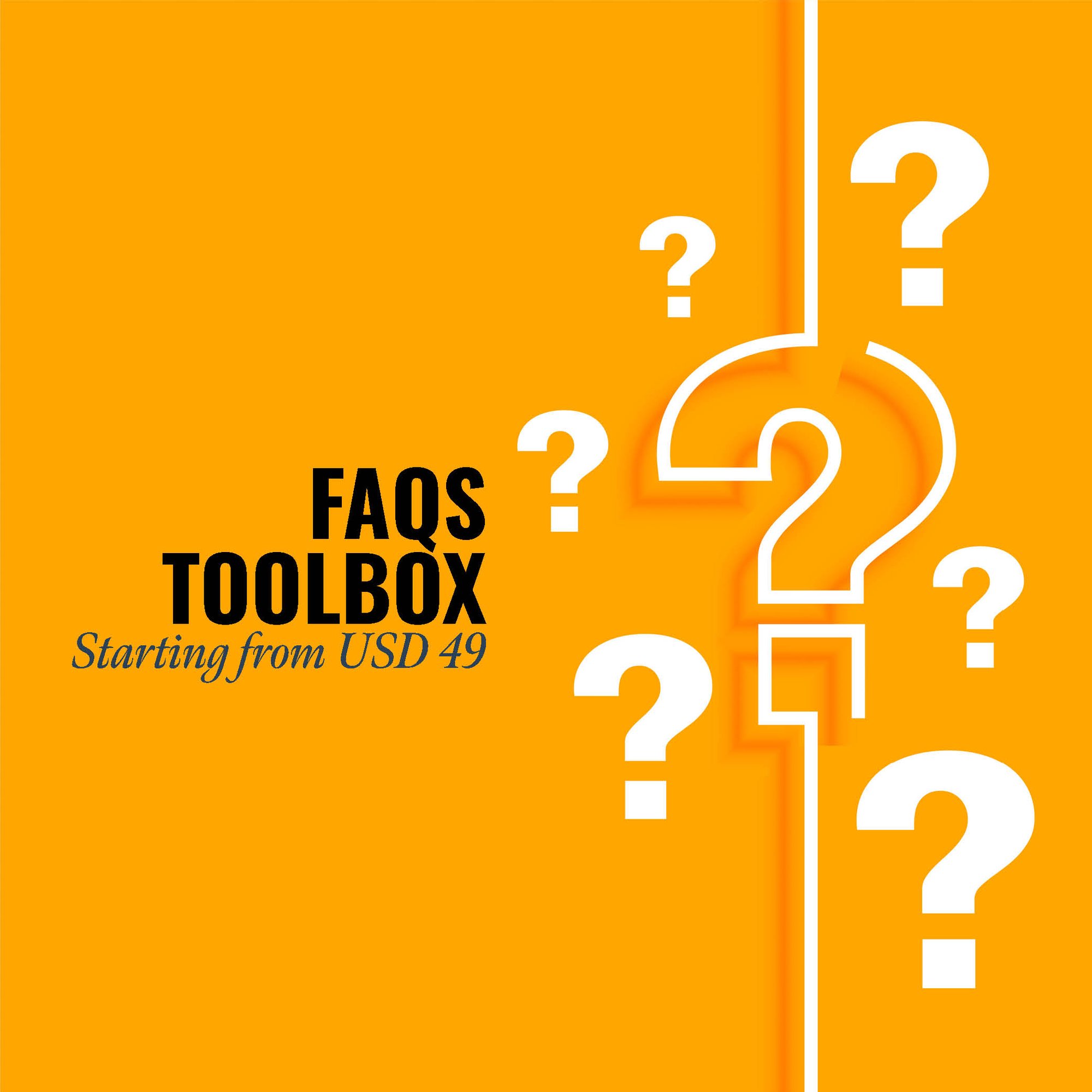The noteworthiness of an SOP (Standard Operating Procedure) Manual for Oilseed and Grain Combination Farming lies in its capacity to optimize agricultural operations, ensure environmental sustainability, and enhance productivity. This manual serves as a comprehensive guide, delineating standardized procedures for planting, cultivation, harvesting, and processing of oilseeds and grains. Its significance is evident in promoting efficient resource utilization, minimizing waste, and adhering to sustainable farming practices. By providing a structured framework, the manual facilitates consistency in crop management, reducing the risk of errors and ensuring optimal yields. It becomes an invaluable tool for training farm personnel, aligning them with best practices and safety protocols. Furthermore, the SOP Manual contributes to regulatory compliance, addressing environmental concerns and promoting responsible agriculture. In essence, it plays a pivotal role in fostering the success and sustainability of oilseed and grain combination farming operations.
CLICK HERE to download the List of SOPs Document in PDF format. Please share this document with your clients, colleagues and senior officers.
Top 50 Standard Operating Procedures (SOPs) for Oilseed and Grain Combination Farming
SOP-042-001: Standard Operating Procedure for Field Preparation and Planning
SOP-042-002: Standard Operating Procedure for Seed Selection and Treatment
SOP-042-003: Standard Operating Procedure for Planting Operations
SOP-042-004: Standard Operating Procedure for Fertilization
SOP-042-005: Standard Operating Procedure for Irrigation Management
SOP-042-006: Standard Operating Procedure for Weed Control
SOP-042-007: Standard Operating Procedure for Pest and Disease Management
SOP-042-008: Standard Operating Procedure for Harvesting Operations
SOP-042-009: Standard Operating Procedure for Grain Drying and Storage
SOP-042-010: Standard Operating Procedure for Oilseed Processing

SOP-042-011: Standard Operating Procedure for Crop Rotation and Cover Cropping
SOP-042-012: Standard Operating Procedure for Equipment Maintenance
SOP-042-013: Standard Operating Procedure for Safety Procedures
SOP-042-014: Standard Operating Procedure for Environmental Stewardship
SOP-042-015: Standard Operating Procedure for Record Keeping
SOP-042-016: Standard Operating Procedure for Integrated Pest Management (IPM)
SOP-042-017: Standard Operating Procedure for Drought Management
SOP-042-018: Standard Operating Procedure for Quality Control during Harvest
SOP-042-019: Standard Operating Procedure for Oilseed and Grain Marketing
SOP-042-020: Standard Operating Procedure for Soil Erosion Control
SOP-042-021: Standard Operating Procedure for Disease Resistance Management
SOP-042-022: Standard Operating Procedure for Cold Storage and Preservation
SOP-042-023: Standard Operating Procedure for Equipment Calibration
SOP-042-024: Standard Operating Procedure for Emergency Response Planning
SOP-042-025: Standard Operating Procedure for Waste Management
SOP-042-026: Standard Operating Procedure for Nutrient Management
SOP-042-027: Standard Operating Procedure for Training Programs
SOP-042-028: Standard Operating Procedure for Precision Farming Practices
SOP-042-029: Standard Operating Procedure for Community Relations
SOP-042-030: Standard Operating Procedure for Regulatory Compliance

SOP-042-031: Standard Operating Procedure for Energy Efficiency
SOP-042-032: Standard Operating Procedure for Soil Health Management
SOP-042-033: Standard Operating Procedure for Biosecurity Measures
SOP-042-034: Standard Operating Procedure for Harvest Logistics
SOP-042-035: Standard Operating Procedure for Diversification Strategies
SOP-042-036: Standard Operating Procedure for Water Quality Management
SOP-042-037: Standard Operating Procedure for Climate Adaptation Strategies
SOP-042-038: Standard Operating Procedure for Supply Chain Collaboration
SOP-042-039: Standard Operating Procedure for Farm Financial Management
SOP-042-040: Standard Operating Procedure for Pollinator Protection
SOP-042-042: Standard Operating Procedure for Post-Harvest Processing
SOP-042-043: Standard Operating Procedure for Traceability Systems
SOP-042-044: Standard Operating Procedure for Water Use Efficiency
SOP-042-045: Standard Operating Procedure for Employee Health and Wellness
SOP-042-046: Standard Operating Procedure for Farm Aesthetics and Landscape Design
SOP-042-047: Standard Operating Procedure for Technology Adoption
SOP-042-048: Standard Operating Procedure for Food Safety Protocols
SOP-042-049: Standard Operating Procedure for Biodiversity Conservation
SOP-042-050: Standard Operating Procedure for Continuous Improvement and Evaluation

I always say, writing an SOP is somewhere between art and science. So far you may be clueless on where to start and how to progress on an SOP? This will not be the case after you diligently go through this SOP ToolBox. We have summarised all our secrets here to get you started and to deliver a stunning SOP to your management.
The international demand for grains and oilseeds is increasing due to population growth, increasing income, changing diets, and urbanization. In many ways, each of these has become interlinked population growth is largely in developing countries, which are the same areas seeing the highest increase in relative incomes, and also with the greatest shift of consumers from rural to urban areas. As a result, these are the regions that are also seeing the greatest changes in population diets, as people move from a grain-based diet up the scale to one with a greater degree of animal protein. As a result, greater volumes of grains and oilseeds are required to provide feed for the animals which serve this new diet. In addition to the increasing demand from food and feed, the growth in biofuels production further increases the demand for grains and oilseeds, particularly for ethanol derived from corn and biodiesel derived from oilseeds. Finally, it is important to also be aware of the increasing usage of grains and oilseeds in industrial products. It is important to examine each of these drivers in more detail and then to look at the main four areas of grain and oilseed usage, to further realize how the strong long term growth in demand for grains and oilseeds is evolving.
1. Standard Operating Procedures (SOP) Manual for Accounts Department
2. Standard Operating Procedures (SOP) Manual for Finance Department
3. Standard Operating Procedures (SOP) Manual for Customer Service
4. Standard Operating Procedures (SOP) Manual for CRM Department
5. Standard Operating Procedures (SOP) Manual for Credit Department
6. Standard Operating Procedures (SOP) Manual for Treasury Department
7. Standard Operating Procedures (SOP) Manual for Human Resources (HR) Department
8. Standard Operating Procedures (SOP) Manual for Training Department
9. Standard Operating Procedures (SOP) Manual for Learning & Development Department
10. Standard Operating Procedures (SOP) Manual for Administration Department
11. Standard Operating Procedures (SOP) Manual for Front Office
12. Standard Operating Procedures (SOP) Manual for House Keeping
13. Standard Operating Procedures (SOP) Manual for Safety Department
14. Standard Operating Procedures (SOP) Manual for Security Department
15. Standard Operating Procedures (SOP) Manual for Facilities Management Department
16. Standard Operating Procedures (SOP) Manual for Vigilance Department
17. Standard Operating Procedures (SOP) Manual for Legal Department
18. Standard Operating Procedures (SOP) Manual for Information Technology (IT) Department
19. Standard Operating Procedures (SOP) Manual for Sales & Marketing Department
20. Standard Operating Procedures (SOP) Manual for Design & Engineering
21. Standard Operating Procedures (SOP) Manual for Procurement Department
22. Standard Operating Procedures (SOP) Manual for Production
23. Standard Operating Procedures (SOP) Manual for SRM Department
24. Standard Operating Procedures (SOP) Manual for Supply Chain Department
25. Standard Operating Procedures (SOP) Manual for Warehouse
26. Standard Operating Procedures (SOP) Manual for New Product Development Department
27. Standard Operating Procedures (SOP) Manual for Research and Development
28. Standard Operating Procedures (SOP) Manual for Quality Department
29. Standard Operating Procedures (SOP) Manual for Calibration Department
30. Standard Operating Procedures (SOP) Manual for Maintenance Department
31. Standard Operating Procedures (SOP) Manual for Logistics Department
Challenges faced by this industry are
- Large scale available land
To gain increased productivity and profitability from agricultural land, it is progressively more important to be able to build farming operations with economies of scale. It is only when farms are of an optimum size that they are able to take full take advantage of such scale benefits as large modern machinery and advanced agricultural technology. In addition, scale of operation allows a farm to be run more like a business, with dedicated employees devoted to functions such as finance, agronomics, and overall management, rather than one farmer covering all bases. In much of the agricultural world, however, aggregating this level of scale is impossible. In many developing countries, not only are farms of a small scale, but social and political pressures mean that it would be impossible to change this. For example, in China, the average farm size is roughly 0.32 acres. Any move to aggregate large numbers of Chinese farms would lead to a rise in unemployed rural workers and potential social unrest. As such, in China, as in similar countries, it is highly unlikely that the current structure will change.
- Political risk
While some countries may contain excellent productive agricultural land, the specter of political risk makes it an unattractive investment target, and as such, unable to receive the capital to help it lift productivity. For example, while Zimbabwe was once known as the breadbasket of Africa, the current government’s nationalization projects have decimated its farming sector. Similarly, while Argentina has a rich agricultural history, the record of its government in imposing tariffs and export restrictions have served as a deterrent for vitally needed agricultural investment.
- Flattening yields
As arable land per capita continues to decline, increasing importance is placed on the need for increasing yields from the world’s major grain and oilseed crops. In the period from 1950 to the 1970s, global crop yields rose markedly, as a result of factors including selective breeding of higher yielding strains of seeds and improved plant tolerance to droughts and insects. In recent years, however, yield growth from most major crops has plateaued, as the limits of development with selective breeding are approached. While further improvements may require increased use of biotechnology and the true impacts of this continue to be under question, the significant opposition to biotechnology in some parts of the world may see yield growth struggle to grow.
- Protectionist policies
Like any business, the top grain and oilseed producers are always seeking to gain greater efficiencies. In terms of grain-producing countries, however, the farmers in countries who are provided with high levels of government support for their industries have less incentive to become efficient, as they will always receive a standard level of support, such as fixed prices for their crops. For example, in the dairy sector, the production price of a liter of milk in some heavily subsidized European countries has been equivalent to the farm gate price of a liter of milk in unsubsidized Australia. In terms of grains and oilseeds, countries with strong subsidies are likely to see production growth limited.
- Poor infrastructure
Regardless of how good a crop may be, it is of little use to a potential buyer, and of little sale value to the grower, if it is unable to be delivered to a point of sale. For this reason, in regions such as Africa where a great deal of transport infrastructure is in great need of modernization, the potential increase in grain supply for use both in neighboring countries and on global export markets is likely to be constrained for years to come.
- National Mission on Oilseeds and Oil Palm (NMOOP)
https://nmoop.gov.in/ - Agricultural Marketing Resource Center (AGMRC)
https://www.agmrc.org/ - Food and Agriculture Organization (FAO)
http://www.fao.org/home/en/
Research By : Mohammed Ijas
Please click here to review the SOP Templates’ Terms & Conditions.
Keywords: sop, manual, policy, sop meaning, sop full form, standard operating procedure, full sop, user manual, sop is, user guide, instruction manual, owners manual, sample sop, operators manual, sop example,standard operating procedure examples, abbreviation sop, standard operating procedure sample, milk sop, sop document, sop process,m manual, operating procedures, operating process, sop meaning in hindi, standard procedure, sop standard operating procedure, sop top, sop writing, standard operating procedures manual, sop meaning in english, sample sop for mba, standard operating procedures examples in office, product manual, sample sop for ms, maintenance manual, sop security, sop in research, sop in business, whats sop, standard of operation, sop set, sop procedure, sop marketing,sop training, sop hotel, sop, sop meaning business, sop form, sba sop,sop software, help manual, sop it, army sop, company sop, sop sap, o m manual, standard operating procedure examples for small business, shop manual, sop manual, sop meaning in business, purpose of standard operating procedures, sop full meaning, standard operating procedure meaning, sop military, sop standard, sop meaning medical, hr sop, sop production, purpose of sop, sop management, warehouse sop, sales sop, sop pharma, sop manufacturing, sop creation, sop laboratory, ms sop, sop full form in hindi, sop front office, sop customer service, sop online, gmp sop, sop purchasing, sop pharmacy, sop safety, sop for project management,sample sop for australian student visa, sop meaning in tamil, sop system, best sop, sop up, sop in english, sop for mechanical engineering, sop for university,sop in malay, sop lab, sop for business analytics, sop model, sop in pharmacy, developing sops, standard operating procedure examples manufacturing, sop full form in retail,sop full form in medical, sop engineering, sop application, writing standard operating procedures, procurement sop, sop maintenance,standard operating procedure nhs, sop clinical trial, sop operations,sop in construction, operating procedures manual, standard operating procedure ppt, standard procedure meaning, sop ppt, a sop, sop document meaning, sop def, sop full form in safety, sop quality control, sop for college, sop quality, sop service, types of sop, sop for engineering management, sop document sample, benefit of sop, preparing sop, standard operating procedure in hindi, sop for visa, sop compliance, sop protocol, sop aviation, sop meaning in chat, standard operating process, sop meaning military, sop for business management, standard operating procedure software, sop list, sop medical, sop logistics, sop project, sop for it department, sop call center, standard work procedures, sba sop 50 10, sop meaning in logistics, standard operating procedure laboratory, test sop, sop sample for ms, drafting sop, sops meaning in tamil, sops meaning in telugu, sop automotive, standard operating system, sop cafe, sop slideshare, sop ap, sop bank, sop in retail, creating standard operating procedures, sop admin, document control sop, pharmaceutical sop,sop in pharmaceutical industry, statement of purpose harvard, sop examples for ms, quality assurance sop, sop in clinical research, nursing sop, sop for transportation, sop policies, sops are specific to a process, sop in hindi, standard operating procedure for warehouse picking, master sop, list of sop for pharma, pharmaceutical sop examples, types of standard operating procedures, retail sop, sample sop for ms in mechanical engineering, standard operating protocol,sop supply chain, system operating procedure, sop rules, example of sop in research, sop in food industry, sop for international business management, sop for hospitality management, sop for hr department, army sop example, sop standard operating, office sop, hr standard operating procedures, preventive maintenance sop, sop for purchase department, human resources sop, fire department sops, information technology sop, operating procedure example, administration sop,sop for retail store, indian sop, construction management sop, sop hotel front office, example sop document, standard and procedures,working sop, sop for maintenance department, sop hrd department,sop full form in hotel industry, sop full, sop for human resource management, laboratory sop examples, standard operating procedure for quality control, sop for ms in mechanical engineering, sop meaning army, security standard operating procedures, sop machine, sample sop for internship, sop for hotel management, sample sop for masters, qa sop, developing standard operating procedures, standard operating procedure document, product recall sop, marketing statement of purpose, it standard operating procedures, equipment sop, sop purpose example, sop shipping, sop for sales and marketing,converting pos to sop, workshop sop, standard operating procedure manufacturing, digital marketing standard operating procedures, following standard operating procedures, sop ki full form, sop for nursing procedures, an sop, purchase sop for manufacturing company, sop a, statement of purpose for mba marketing, full meaning of sop, sop for research internship, research sop sample,vendor qualification sop, sop purchasing and receiving, sop meaning in visa, sop for admission, standard operating procedure medical office, sop in industry, sop sales marketing, navy sop, project management standard operating procedures, sop it support, standard operating manual, security operating procedures, statement of purpose for international business, procurement standard operating procedures, communication sop, sop full form in pharma, minimum sop, sop health and safety, product sop, sop for marketing department, sop in medical terms, sales standard operating procedure, sop purchase order, department sop, customer service standard operating procedures, clinical sop, marketing standard operating procedure, sop standard operating procedure example, construction standard operating procedures, standard of operations procedures manual sample, sop for facility management, sop full form in education, standard operating procedure in food industry, visa sop,sop for business administration, company sop meaning, sop work, sop operating procedure, sop for summer internship in engineering sample, general administration sop, sop for administrative duties.
Our SOP Templates’ clients are from the following States and Countries:
Alabama, Alaska, Arizona, Arkansas, California, Colorado, Connecticut, Delaware, Florida, Georgia, Hawaii, Idaho, Illinois, Indiana, Iowa, Kansas, Kentucky, Louisiana, Maine, Maryland, Massachusetts, Michigan, Minnesota, Mississippi, Missouri, Montana, Nebraska, Nevada, New Hampshire, New Jersey, New Mexico, New York, North Carolina, North Dakota, Ohio, Oklahoma, Oregon, Pennsylvania, Rhode Island, South Carolina, South Dakota, Tennessee, Texas, Utah, Vermont, Virginia, Washington, West Virginia, Wisconsin, Wyoming.
Afghanistan, Albania, Algeria, Andorra, Angola, Antigua and Barbuda, Argentina, Armenia, Australia, Austria, Azerbaijan, Bahamas, Bahrain, Bangladesh, Barbados, Belarus, Belgium, Belize, Benin, Bhutan, Bolivia, Bosnia and Herzegovina, Botswana, Brazil, Brunei Darussalam, Bulgaria, Burkina Faso, Burundi, Cabo Verde, Cambodia, Cameroon, Canada, Central African Republic, Chad, Chile, China, Colombia, Comoros, Congo (Republic of the), Costa Rica, Croatia, Cuba, Cyprus, Czech Republic (Czechia), Democratic People’s Republic of Korea (North Korea), Democratic Republic of the Congo, Denmark, Djibouti, Dominica, Dominican Republic, Ecuador, Egypt, El Salvador, Equatorial Guinea, Eritrea, Estonia, Eswatini, Ethiopia, Fiji, Finland, France, Gabon, Gambia, Georgia, Germany, Ghana, Greece, Grenada, Guatemala, Guinea, Guinea-Bissau, Guyana, Haiti, Honduras, Hungary, Iceland, India, Indonesia, Iran, Iraq, Ireland, Israel, Italy, Jamaica, Japan, Jordan, Kazakhstan,Kenya, Kiribati, Kuwait, Kyrgyzstan, Lao People’s Democratic Republic (Laos), Latvia, Lebanon, Lesotho, Liberia, Libya, Liechtenstein, Lithuania, Luxembourg, Madagascar, Malawi, Malaysia, Maldives, Mali, Malta, Marshall Islands, Mauritania, Mauritius, Mexico, Micronesia (Federated States of), Moldova, Monaco, Mongolia, Montenegro, Morocco, Mozambique, Myanmar (Burma), Namibia, Nauru, Nepal, Netherlands, New Zealand, Nicaragua, Niger, Nigeria, North Macedonia (formerly Macedonia), Norway, Oman, Pakistan, Palau, Panama, Papua New Guinea, Paraguay, Peru, Philippines, Poland, Portugal, Qatar, Republic of Korea (South Korea), Republic of the Congo, Romania, Russian Federation (Russia), Rwanda, Saint Kitts and Nevis, Saint Lucia, Saint Vincent and the Grenadines, Samoa, San Marino, Sao Tome and Principe, Saudi Arabia, Senegal, Serbia, Seychelles, Sierra Leone, Singapore, Slovakia, Slovenia, Solomon Islands, Somalia, South Africa, South Sudan, Spain, Sri Lanka, Sudan, Suriname, Sweden, Switzerland, Syrian Arab Republic (Syria), Tajikistan, Thailand, Timor-Leste, Togo, Tonga, Trinidad and Tobago, Tunisia, Turkey, Turkmenistan, Tuvalu, Uganda, Ukraine, United Arab Emirates, United Kingdom of Great Britain and Northern Ireland, United Republic of Tanzania, United States of America, Uruguay, Uzbekistan, Vanuatu, Venezuela, Viet Nam, Yemen, Zambia, Zimbabwe.
Fhyzics supports organisations in developing the following documentations:
Standard Operating Procedures (SOPs), Work Instructions, Policies and Procedures, Process Flow Diagrams, Job Descriptions, Training Manuals, Employee Handbooks, Compliance Guidelines, Quality Assurance Manuals, Health and Safety Procedures, Risk Management Plans, Business Continuity Plans, Internal Audit Procedures, Incident Reporting Forms, Performance Management Guidelines, Change Management Procedures, Vendor Management Guidelines, Customer Service Protocols, IT Security Policies, IT Support Documentation, Disaster Recovery Plans, Operational Checklists, Data Management Policies, Confidentiality Agreements, Non-Disclosure Agreements, Employee Onboarding Procedures, Employee Exit Procedures, Performance Appraisal Forms, Employee Code of Conduct, Conflict Resolution Procedures, Product Development SOPs, Supply Chain Management Guidelines, Procurement Guidelines, Inventory Management SOPs, Shipping and Receiving Procedures, Production Scheduling SOPs, Maintenance Procedures, Equipment Calibration Documents, Environmental Compliance Documentation, Sustainability Policies, Customer Feedback Forms, Marketing Strategies, Advertising Guidelines, Brand Management Guidelines, Product Packaging SOPs, Laboratory Testing Procedures, Regulatory Compliance Documentation, Tax and Accounting Procedures, Contract Management Procedures, Legal Compliance Guidelines, Financial Reporting Procedures, Budgeting Procedures, Internal Control Procedures, Fraud Prevention Policies, Asset Management Guidelines, Purchase Order Procedures, Sales and Distribution Guidelines, Client Contracts, Customer Return Policies, Internal Communication Protocols, Vendor Evaluation Forms, Product Safety Standards, Workplace Health and Safety Standards, Public Relations Procedures, Social Media Management Guidelines, Crisis Management Plans, Employee Grievance Procedures, Privacy and Data Protection Policies, Digital Transformation Guidelines, Innovation Management Procedures, Continuous Improvement Guidelines, Strategic Planning Documents, Corporate Social Responsibility (CSR) Guidelines, Audit Trails and Records, Employee Training and Development Records, Succession Planning Documents, Talent Acquisition Procedures, Team Collaboration Protocols, Employee Benefit Plans, Workplace Diversity Guidelines, Time and Attendance Tracking, Payroll Procedures, Employee Leave Policies, Conflict of Interest Policy, Emergency Response Procedures, Environmental Impact Assessment Procedures, Transportation and Logistics Procedures, Inventory Control Forms, Warehouse Management Guidelines, Product Lifecycle Management SOPs, Customer Satisfaction Surveys, Third-Party Risk Assessment Guidelines, Technology Adoption Policies, Software Licensing Guidelines, Security Incident Response Procedures, Supply Chain Risk Management Policies, Product Recall Procedures, Food Safety Guidelines, Employee Wellness Programs, Workplace Ergonomics Guidelines.





.jpg?width=645&height=337&name=Standard%20Operating%20Procedure%20-%20SOP%20ToolBox%20(1).jpg)











